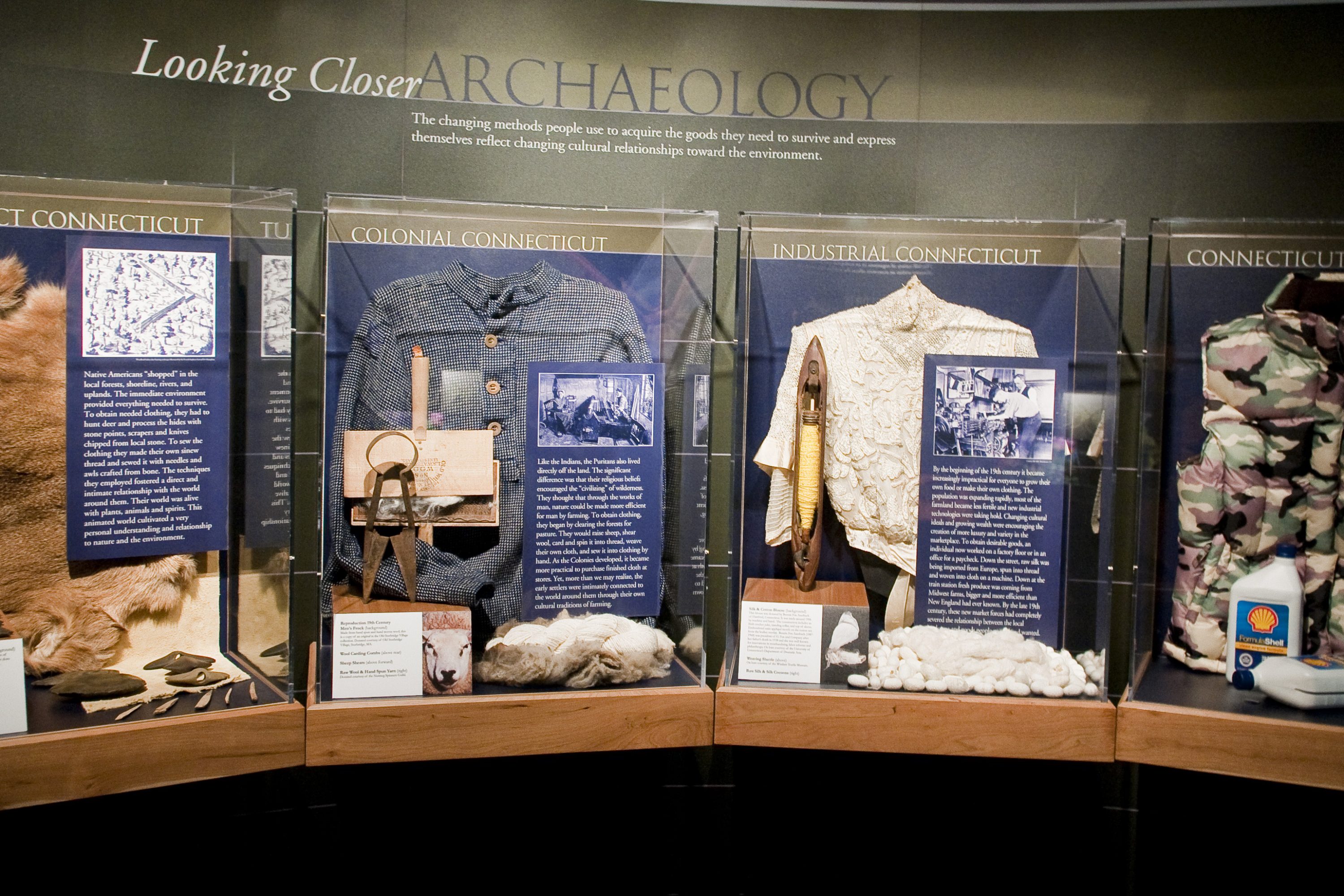The Connecticut State Museum of Natural History, with programs that range from archaeology field schools to lectures on biological research, is leaving its present location on Hillside Road.
We’re going to be bringing the museum to the people … — E. Carol Polifroni
The move, which happens as the museum department itself moves under the University’s Office of Public Engagement, is an opportunity to expand the rich educational resources built up over more than 30 years, as the museum’s public-facing operations will change from being housed in a single location to more of a dynamic range of offerings.
“We’re going to be bringing the museum to the people, so to speak,” says E. Carol Polifroni, director of the public engagement office.
After the move, while the museum staff will be in new offices on campus, there won’t be a permanent exhibit space open to the public on the Storrs campus , a change in how the museum has operated, which included several moves prior to arriving on Hillside Road in 2000.


In the most important sense, though, very little will change for the museum: its staff, along with the state archaeologist, who is a faculty member in the Department of Anthropology, will continue their work exactly as before, focusing on the lectures, programs, rotating exhibits, public outreach, and other features that have made the museum an essential part of how the public understands Connecticut’s rich natural history. The museum’s collections will still be maintained at the University, and the independent governing board overseeing the museum will continue, as required by state statute.
Although leaving the space on Hillside Road presents some new challenges, museum director Leanne Kennedy Harty says, the museum has already been exploring innovative approaches to fulfilling its mission. As a recent example, she cites a project being undertaken with the Department of Ecology and Evolutionary Biology on the Carl and Marian Rettenmeyer Army Ant Guest Collection, one of the premier insect collections in the world, which includes curation of the collection, an online database, and a public exhibition.
The motivation behind the decision is found in the University’s 2014 academic plan. The Office of Public Engagement, with a mission to “provide leadership to connect, coordinate, facilitate, foster, prepare, and promote outreach programs and engaged scholarship which serve the public good,” seemed a more natural home for a public resource like a museum than the College of Liberal Arts and Sciences, where it was previously based.

Although the state law that formally created the museum and based it at UConn was passed in 1985, the institution’s history long predates that. As founding director, Carl Rettenmeyer – who also collected the ant specimens that are the subject of the museum’s current major project – wrote to supporters in the museum’s first newsletter, in 1983, “Connecticut has had a State Museum of Natural History for many years, but it has been hidden in attics, basements, and other rooms at the University of Connecticut.”
Assembling, inventorying, and preserving those artifacts has been a major goal and accomplishment of the museum, and won’t change with the move, just as it didn’t change during the several moves the museum experience prior to arriving at the former Apple Sales Building on Hillside Road in 2000.
That building will now be occupied by the College of Liberal Arts and Sciences Academic Services Center, which provides support to faculty and undergraduate students in the form of training, outreach, advising, orientation, and other avenues.
As the museum charts its long-term future, Kennedy Harty sees opportunities for expanding its work with a variety of partners at the University, mentioning discussions about ways to work with the School of Fine Arts, for example, on using some of its collection. But the overall mission remains the same.
“The museum mission today is still what it’s been since Carl founded it,” she says, “the collections, the exhibits, and the education.”



